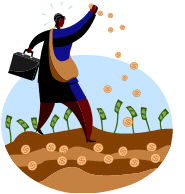 I’ve been having statistics withdrawal symptoms (itchy percentage points, twitchy tables, etc) – and I’m going to satisfy that right here, right now.
I’ve been having statistics withdrawal symptoms (itchy percentage points, twitchy tables, etc) – and I’m going to satisfy that right here, right now.
Today I’m going to have a look at 2011 (because lovely as they were, I’m tired of those 2012 statistics ) in terms of their recommended retail price (RRP) and actual selling price (ASP).
With Amazon, the price of books began to vary widely. There used to be only 2 stages of book pricing: New, when all fiction cost roughly the same, and Bargain Bin, when titles were dramatically reduced before going out of stock entirely in those quaint old institutions remembered by those of us of a certain age (bookshops).
The life cycle of a book today is vastly different. With online sales facilitated by companies with massive warehousing capability, e-books which sell for any price between free and full whack and never being out of print, self-published authors setting their own price targets and sales promotions starting approximately 5 minutes after publication, it’s difficult to know where to price a book these days.
What price was the 2011 Bestseller?
So let’s have a look at 2011, when all of these forces were already in play: at what books were supposed to cost, and what they actually ended up selling for. Firstly, let’s remind ourselves of what we were reading in 2011, with a look at the top 30:
Of the top 100 Bestsellers in 2011 (UK figures), the recommended retail price of each title, and the subsequent average actual selling price shows that titles almost always sold for less than their RRP, sometimes by a hefty chunk.
Only the already deeply discounted title – that sole book for £1.00 – sold for full price (for anyone just dying to know what that was, I’ll throw you a bone and tell you. It was Spy Dog’s Got Talent: The Great Pet Shop Panic, by Andrew Cope and Kate Davies, which hit #99 on the top 100 and made a total sales volume of £124,234).
Discounts on the others varied from a minimum of 30% to a whopping 61% on the single title priced £30 (Jamie’s Great Britain, Jamie Oliver, # 12, total sales £3.01 million) which does raise the question – why price a book at £30 if you’re going to sell it for less than the discounted price of books priced £25? I know they’re pitching it as a premium product, but this is Jamie Oliver, not the Queen’s personal chef. It’s not my idea of fun, but if this guy wrote a recipe for scrambled egg on the back of a bus ticket the British public would buy it.
Most Popular: 7.99 and 6.99
The most popular RRP was £7.99, which applied to the vast majority of fiction paperback titles, but the average actual selling price for these 60 books was £5. The next most popular price was £6.99 and these sold for £4.86. Interestingly, no adult fiction bestsellers at all were pitched below £6.99.
Unfortunately, we have no data (yet) on e-book sales. The powers that be didn’t think that these counted in the official charts in 2011 or 2012. Change is afoot in 2013, but it appears that they are still excluding titles selling below a certain price. This is madness – a perfect example of the Old Guard failing to keep up with or even notice the market of today – but at least we have some slightly meatier statistics to chew on for 2013, albeit a bit grey and stringy, with very little marbling and not half enough taste.
So – authors – what price is your book going to be?



Looking at all those statistics coupled with the blood sweat and tears that go into writing a book in the first place, you would be tempted to not bother writing at all!!
LikeLike
I know, it’d make you sigh, wouldn’t it? But then you see that EL James sold 70 million books last year if you include e-copies and it casts the whole thing in an entirely different light…
LikeLike